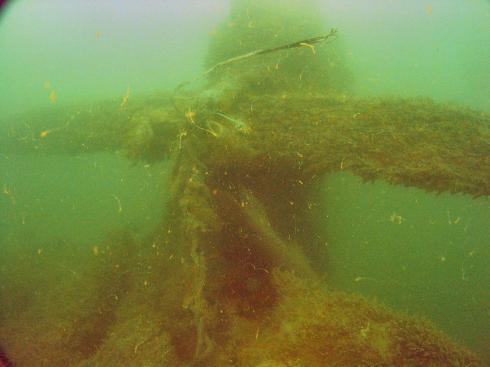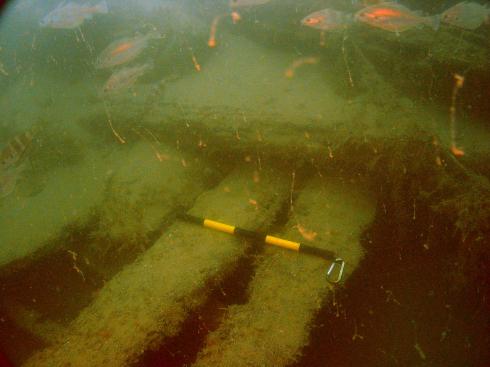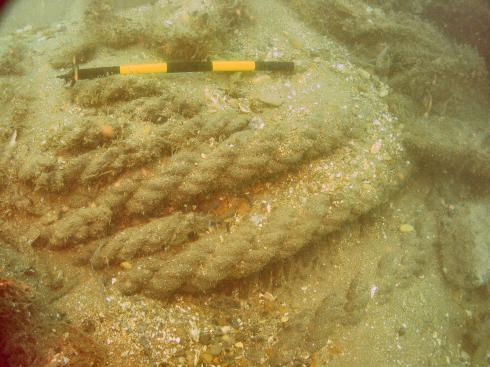The 'Great Storm' of 1703 is believed to have sunk 90 vessels on the Goodwin Sands off Kent alone. One of the ships lost was the warship Stirling Castle.
The Stirling Castle was a Third Rate, 70 gun ship built at Deptford in 1678 as part of Samuel Pepys' 'Thirty Ships' building programme intended to regenerate the Royal Navy following the third Anglo-Dutch war (1672-1674).
After serving during William III's war with France in the 1690s the Stirling Castle was rebuilt at Chatham, and refitted in 1701. The Stirling Castle was engaged in war duties in the Mediterranean during the War of Spanish Succession (1701-1714) and had just returned in the Summer of 1703. In November that year the Stirling Castle was one of a large number of naval vessels anchored in the Downs when the storm struck. The ship was driven onto the Goodwin Sands and sank. Only 69 of the 268 crew survived.
The wreck was found by local sports divers in 1979 in an exceptional state of preservation. It was designated as a protected wreck under The Protection of Wrecks Act (1973) in 1980. Since its discovery the site has deteriorated rapidly due to the loss of the sand that buried the wreck and unauthorised fishing and diving activities.

A local diving group called SeaDive has been working to record and preserve the wreck. The licensee of the Stirling Castle is a member of the group.
Wessex Archaeology Investigations
English Heritage commissioned Wessex Archaeology to undertake a desk based assessment of the wreck site in 2003, and diving investigations on the site in 2003 and 2006.
Wessex Archaeology divers were requested to survey artefacts and key features on the wreck using tracked diver positioning, and to produce a site plan based on measurements between identified features. The survey was to pay particular attention to features that might be at risk, such as the sternpost and rudder. Existing plans made by SeaDive and multibeam acoustic survey data provided by RASSE were available to aid our dive team meet their objectives.
Results
Diving conditions on the Stirling Castle are difficult. Fast currents can drag a diver off the site and visibility can sometimes be reduced to zero because of algae and sediments in the water.
Our divers were able to produce an updated site plan for the wreck although the size of this well preserved wreck means that an overall drawn plan of the site has not yet been completed. A number of artefacts in danger of being lost from the wreck were recovered and handed to English Heritage for conservation.
Map showing the location of the protected wreck Stirling Castle
[gmap markers=big red::51.2744,1.50019|zoom=8 |center=51.2744,1.50019 |width=100% |height=500px |control=Small |type=Map]

